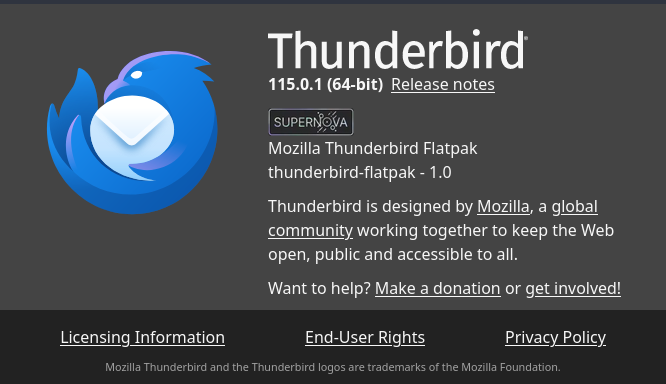this post was submitted on 26 Jul 2023
400 points (96.9% liked)
Linux
53424 readers
502 users here now
From Wikipedia, the free encyclopedia
Linux is a family of open source Unix-like operating systems based on the Linux kernel, an operating system kernel first released on September 17, 1991 by Linus Torvalds. Linux is typically packaged in a Linux distribution (or distro for short).
Distributions include the Linux kernel and supporting system software and libraries, many of which are provided by the GNU Project. Many Linux distributions use the word "Linux" in their name, but the Free Software Foundation uses the name GNU/Linux to emphasize the importance of GNU software, causing some controversy.
Rules
- Posts must be relevant to operating systems running the Linux kernel. GNU/Linux or otherwise.
- No misinformation
- No NSFW content
- No hate speech, bigotry, etc
Related Communities
Community icon by Alpár-Etele Méder, licensed under CC BY 3.0
founded 5 years ago
MODERATORS
you are viewing a single comment's thread
view the rest of the comments
view the rest of the comments

Generally speaking, the advantages of Flatpaks are:
-The developers only need to maintain and release one version
-It's sandboxed, for each app you can decide which parts of your filesystem are exposed, which env variables, which types of inter-process communications, etc
-You kinda avoid dependency hell. You can use old unmaintained packages because Flatpak will provide old versions of their dependency if they're needed, while at the same time avoiding unnecessarily duplicated packages
-All installed apps are in your .var folder instead of being system-wide. Every app has its own folder with its own .config and .local/share inside, with their respective config files and data
-It supports partial updates
-It doesn't require root permissions to use
-It lets you use the most recent software even in really old LTS systems like Debian, and the Flatpaks updates are usually as quick as rolling release distros
-You don't need to abuse PPAs or the AUR
-It makes your system updates actually faster since you'll have less system packages, and you'll be able to update your big apps separately
I may be missing some, but those are the most important to me
But they don't adhere to the system theme at all so every time I launch a flatpak it is white if it uses GTK; and they are annoying to launch via command line.
You can theme them with some overrides: https://itsfoss.com/flatpak-app-apply-theme/
I throw this in my
.local/share/flatpak/overrides/globalfile in order to enable theming (the override directory may require flatseal? I forget):Then you can put your stuff in your personal
~/.themesand~/.iconsdirectoriesAs for calling via command line, you can use something like this or just manually make aliases.
Thank you! This definitely makes sense to explore further.